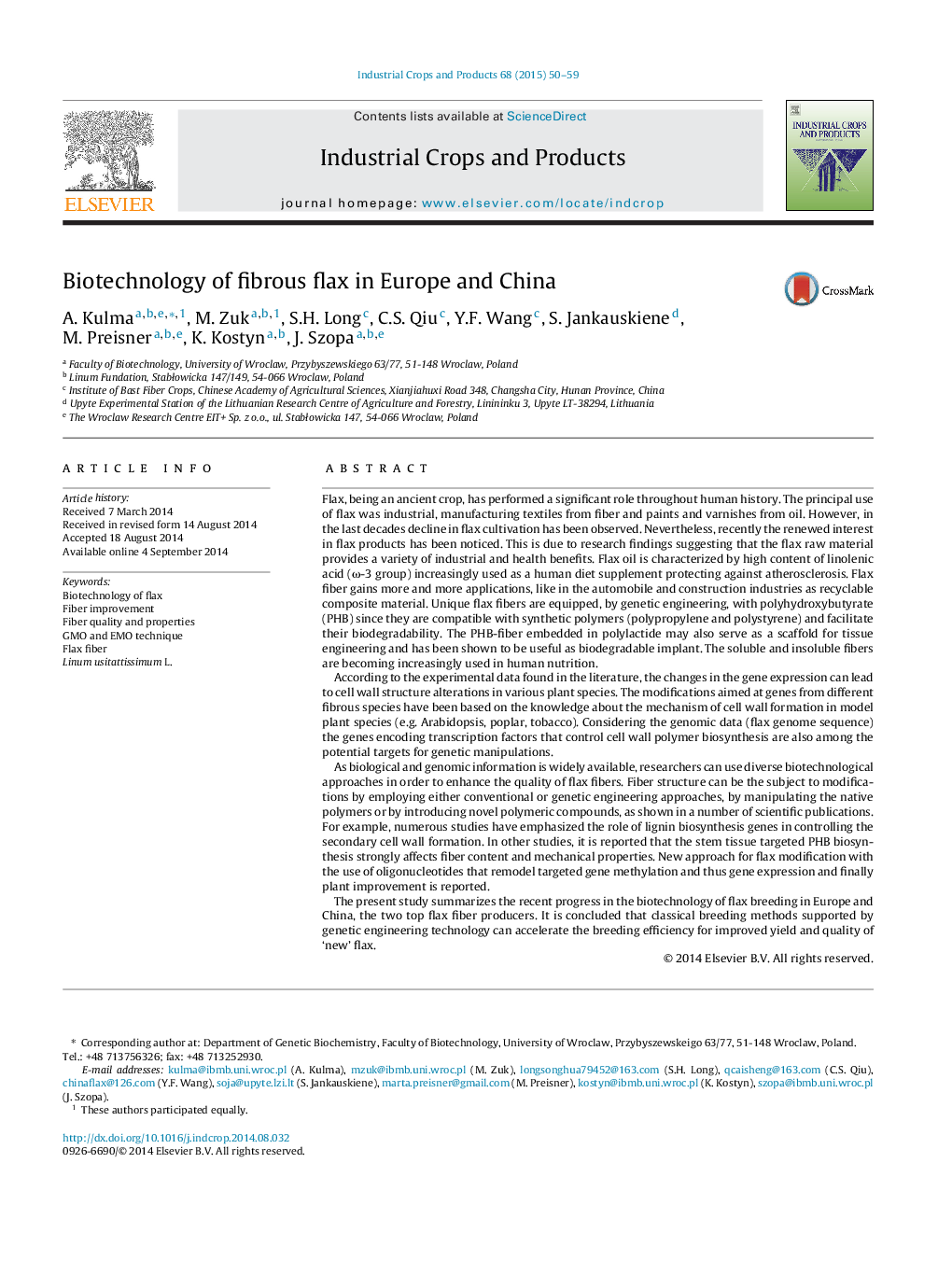| Article ID | Journal | Published Year | Pages | File Type |
|---|---|---|---|---|
| 4512921 | Industrial Crops and Products | 2015 | 10 Pages |
•The review concerns of GMO and EMO flax generations.•The application of fibers from GMO and EMO flax was considered.•The successful use of flax fibers in chronic wound healing is reported.
Flax, being an ancient crop, has performed a significant role throughout human history. The principal use of flax was industrial, manufacturing textiles from fiber and paints and varnishes from oil. However, in the last decades decline in flax cultivation has been observed. Nevertheless, recently the renewed interest in flax products has been noticed. This is due to research findings suggesting that the flax raw material provides a variety of industrial and health benefits. Flax oil is characterized by high content of linolenic acid (ω-3 group) increasingly used as a human diet supplement protecting against atherosclerosis. Flax fiber gains more and more applications, like in the automobile and construction industries as recyclable composite material. Unique flax fibers are equipped, by genetic engineering, with polyhydroxybutyrate (PHB) since they are compatible with synthetic polymers (polypropylene and polystyrene) and facilitate their biodegradability. The PHB-fiber embedded in polylactide may also serve as a scaffold for tissue engineering and has been shown to be useful as biodegradable implant. The soluble and insoluble fibers are becoming increasingly used in human nutrition.According to the experimental data found in the literature, the changes in the gene expression can lead to cell wall structure alterations in various plant species. The modifications aimed at genes from different fibrous species have been based on the knowledge about the mechanism of cell wall formation in model plant species (e.g. Arabidopsis, poplar, tobacco). Considering the genomic data (flax genome sequence) the genes encoding transcription factors that control cell wall polymer biosynthesis are also among the potential targets for genetic manipulations.As biological and genomic information is widely available, researchers can use diverse biotechnological approaches in order to enhance the quality of flax fibers. Fiber structure can be the subject to modifications by employing either conventional or genetic engineering approaches, by manipulating the native polymers or by introducing novel polymeric compounds, as shown in a number of scientific publications. For example, numerous studies have emphasized the role of lignin biosynthesis genes in controlling the secondary cell wall formation. In other studies, it is reported that the stem tissue targeted PHB biosynthesis strongly affects fiber content and mechanical properties. New approach for flax modification with the use of oligonucleotides that remodel targeted gene methylation and thus gene expression and finally plant improvement is reported.The present study summarizes the recent progress in the biotechnology of flax breeding in Europe and China, the two top flax fiber producers. It is concluded that classical breeding methods supported by genetic engineering technology can accelerate the breeding efficiency for improved yield and quality of ‘new’ flax.
